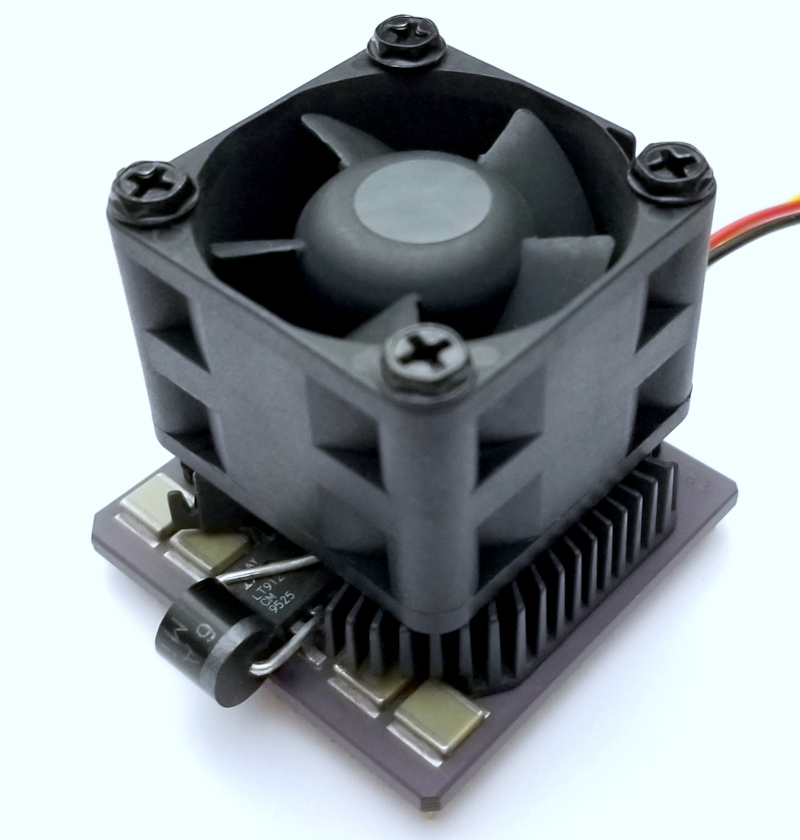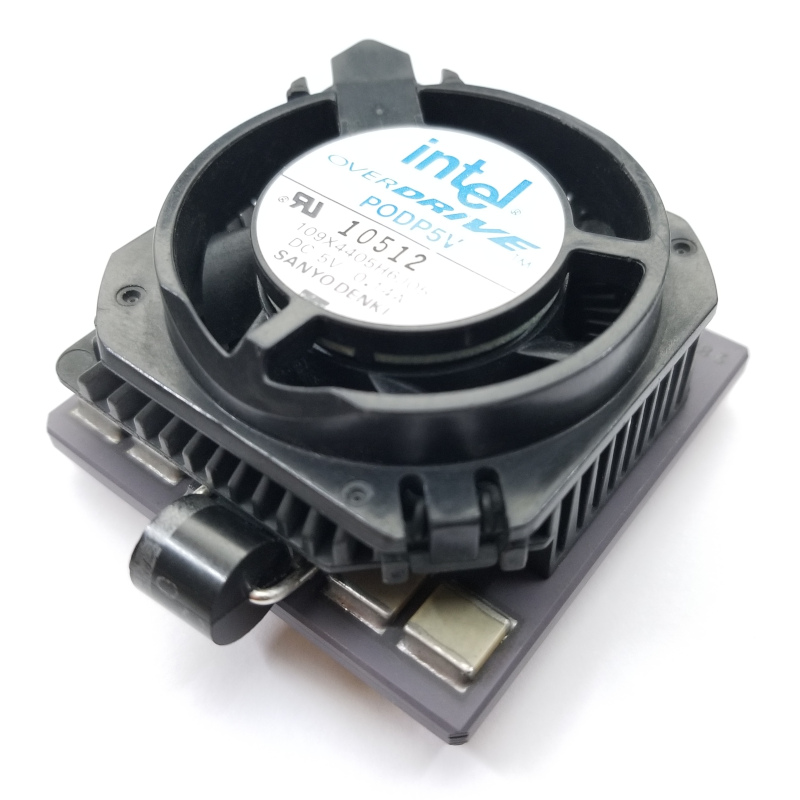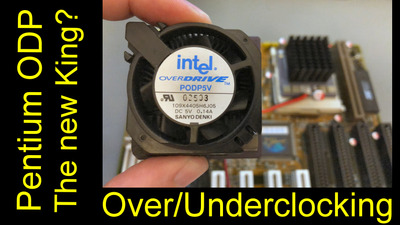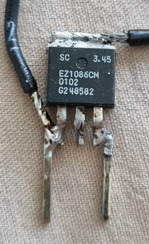All the modification attempts are too risky, why don't you simple move to a Pentium III with a good AGP graphics card and go like that? Even an Intel i740 or an on board i815 graphics have Windows 3.1 drivers if needed. For engineers, the way taken from year from 1995 to 2000 is astonishing. ISA --> EISA --> VL-Bus --> PCI --> AGP.... (1x, 2x, 4x, 8x)
A Pentium Overdrive processor for 486 systems have many limitations. First of all, the memory speed is around 25 MB/s for Fast Page memory, 40 MB/s for EDO. A 133 MHz Pentium III with a SD-Ram gives you around +220 MB/s. From the point of graphics card, at most those 486 systems have 512 kb to maximum 2 MB graphics card. (There were 4 MB ones for example from Matrox but impossible to find.) The ram speed causes bus speed limitation. All ISA slots all together the "total" bandwidth is 16 Megabytes/second for 16 bit bus. So if you have a disk controller normally 2 to 4 MB/s transfer speed it can need. A sound card takes 1 or 2 megabytes bandwidth. A basic ethernet card 10 Mbps, around 150 kB, A graphics card can take at most 8~10 MB from that sharing. Remaining bandwidth goes to other components such as floppy, serial, printer ports etc. You can not hope much from a 10 MB/s graphics bus paired with a really limited processing power. This means overclocking a CPU can not change the result much. On an EISA bus 32 bit by 8,33 MHz gives 33 MB/s total bandwidth. But, the majority of this generally goes to SCSI bus on them, around 10 MB/s. The ram speed of Fast page memory's 25 MB/s does not help going more over that, so EISA bus can give at most 25 MB/s actual use. Early PCI buses also can not give actual 133 MB/s speed, because of the same Ram speed limitation. If there is a double channel Socket 7 Pentium with EDO, it can try at most 40 x 2 = 80 MB/s for the all bus bandwidth use, but here early Pentium processing speed is not enough, it can not calculate that much, starting from +200 MHz Pentium MMX and Pentium Pro can barely go up to this limit. Do not forget, theoretical PCI bus transfer speed is 133 MB/s for all PCI busses, not for each! Actual speed for all slots are around 60 to 80 MB/s. I have tested this with a PCI Raid card with 8 units of 250 GB IDE drives with Raid 0 configuration many years ago.
If you want to play Doom faster try Nintendo version "Doom 64 for PC" is much better, but still not very fine. It has very high system resources like GeForce 6xx card, 8 GB Ram, AMD Athlon FX or Intel 2nd gen processor and so on. So you don't need to have an early 486 or Pentium for it.
Playing over a transistor with diodes: Well a transistor is a twin diode nevertheless. If you want to increase Voltage, you have to replace the 3.3 Volt, 3 pin regulating transistor, to a one step stronger 3.45 Volt one! All other attepts are actually not engineering. Just replace Voltage regulator chip. The AT power supply, (generally) the well known double 6 pin, or 8 pin connector, has it's limits. On more powerful mainboards, for example on Compaq systems there is another 3rd 6 pin power cable. But, 5 Volt processor supply is an old one, today we are using the processor power from 12 Volt rail with a additional 4 or 8 pin, 8 + 4 pin, or 8 + 8 pin and so on.
I have a Compaq ProSignia 486 mainboard with a Pentium overdrive. I have replaced 16 MHz oscillator to 17.35 MHz one. My 83 MHz Pentium Overdrive runs at 90 MHz. The ram performance increased a bit around 27 MB/s because the oscillator replacement increased 8,33 MHz bus to 9 MHz. I have thought about replacing the oscillator to 19.2 MHz to achieve 10 MHz EISA bus and likewise 100 MHz for my Pentium Overdrive, but decided not to force that much. The overdrive chip perhaps may need 3,3 to 3.45 Volt regulator replacement, but I have an Intel 815 chipset based Pentium III 1 GHz mainboard with onboard graphics, an Asus P3C-E mainboard with Pentium III 600E and 1400 MHz Tualatin processor. So, why do I have to? I have plenty of ram on them and a nVidia 6800 based 256 MB AGP graphics card. I have one AGP based Matrox G550 and an AGP based Intel 740 graphics card as well. Those systems have much faster disk speed compared to a 486 or early Pentium mainboard.
So, if you have such old systems, try not to modify them too hard, a bit is fine. We have many newer systems, if you need plenty of more speed try your way by changing to an upper platform....
I am adding a fixed Voltage regulator chip that outputs 3.45 Volt. There are many other types as well. Those can give maximum of 1,5 Amperes, there is no higher Amp capable one, as far as I know. So you have to stay within the limits, or the chip dies! http://pdf.datasheet.directory/datasheets-1/s … ch/EZ1086CM.pdf
The benefit is: (3.45 Volt x 1.5 Ampere = 5.175 Watt) - (3.3 Volt x 1.5 Ampere = 4.95) = 0.255 Watt only! I can not found LT912CM datasheet anywhere, so I am only assuming it is 1.5 Ampere. All regulator chips generally goes upto 1.5 Ampere including metal ones, small ones, well known 78xx series etc. if Intel's part is different, I can not guarantee the maths I did! Note: Please be aware that, this part's input is 5 Volt, some 3.6 Volt output capable ones need 18 Volts like LT1086CM-3.6
Attention latest note: (LT1585-3.6) is {4.80V ≤ VIN ≤ 7V, 0mA ≤ IOUT ≤ 4A}, terribly 4 Ampere capable! The LT912CM Intel chip might be a maximum (LT1585-3.3) {4.75V ≤ VIN ≤ 7V, 0mA ≤ IOUT ≤ 4.6A} 4.6 Ampere! modders can use this one! 😀 Maybe it can be stronger as well.... https://www.analog.com/media/en/technical-doc … ets/158457a.pdf



